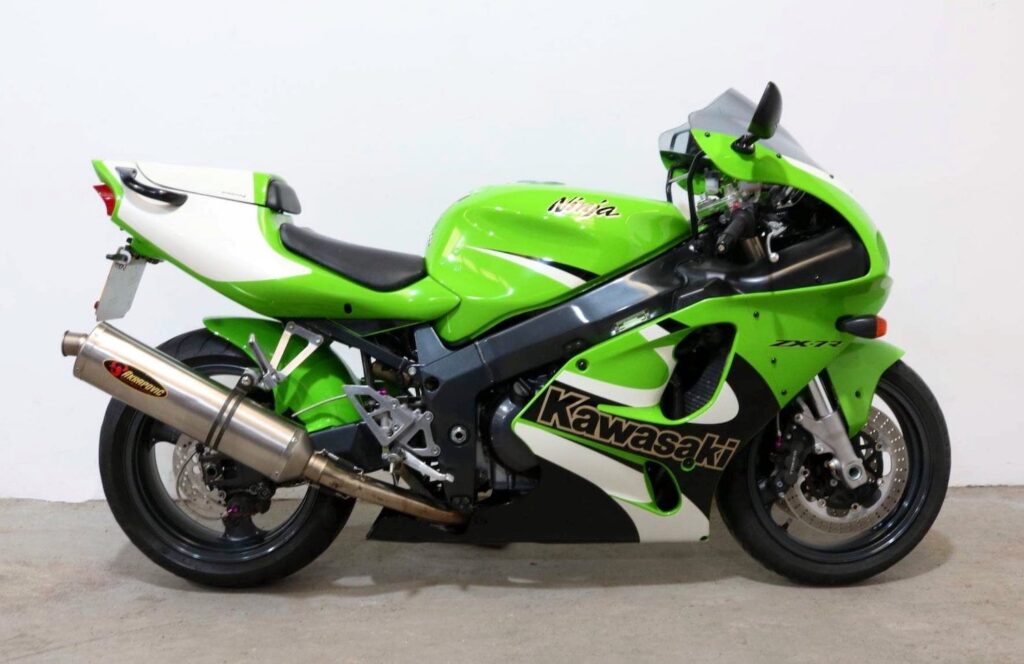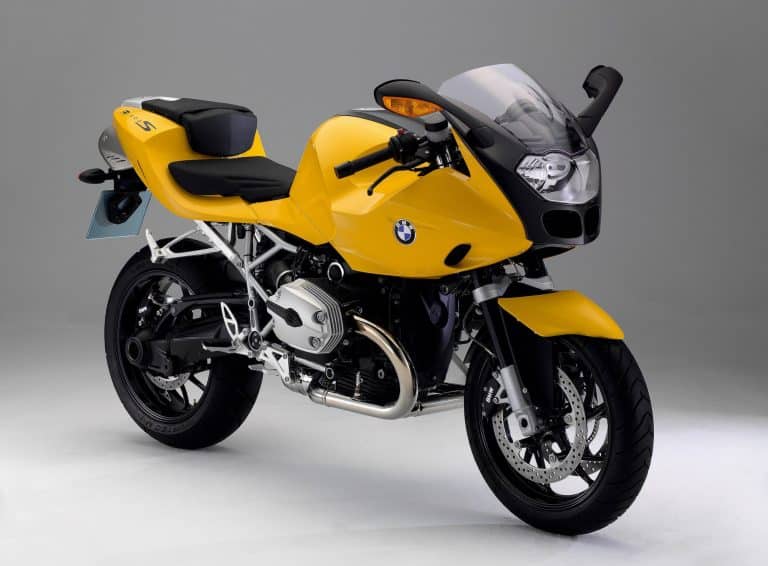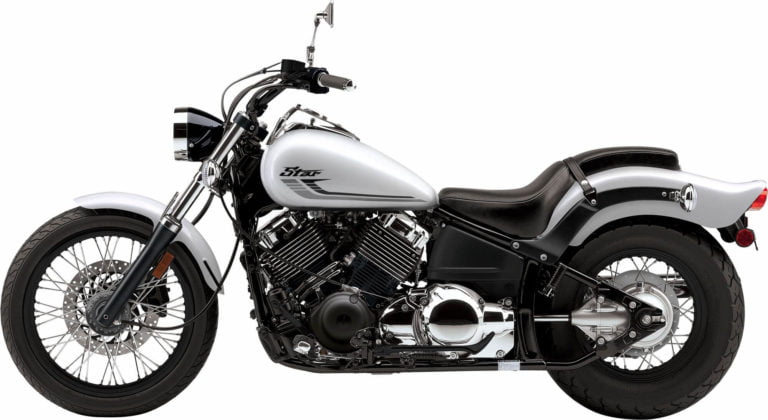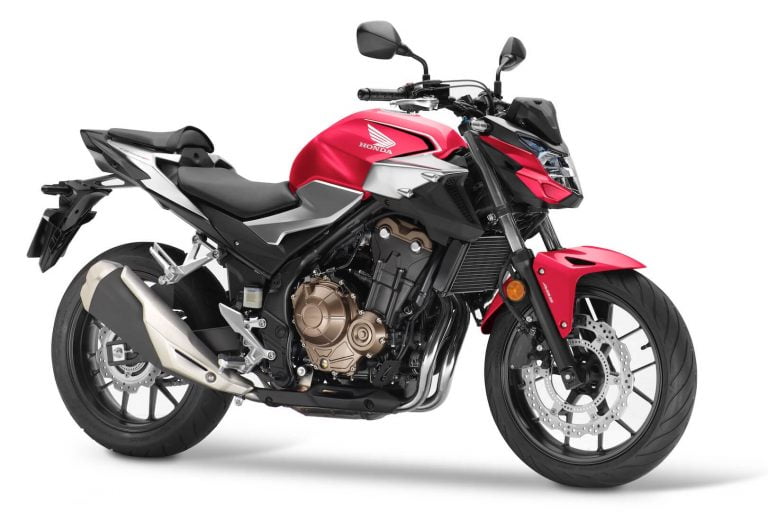Kawasaki Ninja ZX-7R (1996-2003) Maintenance Schedule and Service Intervals
This is the maintenance schedule with associated service intervals for the Kawasaki Ninja ZX-7R.
The Kawasaki Ninja ZX-7R was a motorcycle in the Ninja sport bike series produced from 1989 until 2003. From 1989-1995 in the US market, Kawasaki called ZXR-750R the ZX-7. In 1996, they dropped the ZXR name worldwide and the former ZXR-750 was now ZX-7R.
The ZX-7R has a 749 cc in-line four-cylinder. It’s carburettor-fed and drives the rear wheel through a chain drive. It’s a sporty engine, making over 120 hp at the crank. Kawasaki really knows how to build ’em!
The ZX-7R underwent a few rounds of evolution before 1996, but at that point it remained the same until retirement. It was effectively replaced by the slightly larger-capacity ZX-6R 636, which did double duty replacing the ZX-6R, too.

This site has links for things like oil and spark plugs from which we earn a commission (which unfortunately nobody can save, not even us). If you appreciate this work, then please use those links. Thanks!
Service Intervals for the Kawasaki Ninja ZX-7R
Like other early Kawasaki Ninja motorcycles, the Kawasaki Ninja ZX-7R has oil change service intervals of 6000 mi / 10000 km, at which point you also have to check the valve clearances.
Kawasaki actually prescribes 3000 mi / 5000 km service intervals, requiring you to check the spark plugs and a bunch of other things, listed below.
Since the ZX-7R has a hydraulic clutch, be sure to keep the clutch fluid up to date at the same time as the brake fluid.
Also be sure to keep the coolant up to spec. Many ZX-7Rs have sat for a while, and old coolant means that it’ll be depleted of its corrosion-prevention stuff, and the cooling system may fail as a result.
Maintenance Schedule for Kawasaki Ninja ZX-7R
Below is the maintenance schedule for the Kawasaki Ninja ZX-7R.
Periodic maintenance schedule
The following is the list of maintenance operations to be done on this motorcycle with a time or distance interval — whichever comes earlier.
Notes:
- For higher odometer readings, repeat at the frequency interval established here
- Items marked “check”: Replace, adjust, or torque if necessary.
- The break-in schedule isn’t shown (these are long-ago broken in)
| mi x 1000 | 4 | 8 | 12 | 16 | 20 | 24 | |
|---|---|---|---|---|---|---|---|
| km x 1000 | 6 | 12 | 18 | 24 | 30 | 36 | Every |
| Perform general service check-up (see below) | ✓ | ✓ | ✓ | ✓ | ✓ | ✓ | |
| Engine oil — change | ✓ | ✓ | ✓ | Year, or more often if riding aggressively | |||
| Oil filter — replace | ✓ | ✓ | ✓ | ||||
| Air cleaner element — clean | ✓ | ✓ | ✓ | More often if riding in dusty / rainy conditions | |||
| Spark plug — clean and gap | ✓ | ✓ | ✓ | ✓ | ✓ | ✓ | |
| Valve clearance — check | ✓ | ✓ | ✓ | ||||
| Carburetor synchronization — check | ✓ | ✓ | ✓ | ||||
| Idle speed — check | ✓ | ✓ | ✓ | ||||
| Throttle grip play — check | ✓ | ✓ | ✓ | ||||
| Brake/clutch fluid — change | ✓ | 2 years | |||||
| Front fork oil — change | ✓ | ||||||
| Front fork — check for leaks, smooth operation | ✓ | ✓ | ✓ | ||||
| Rear shock absorber — check for leaks, smooth operation | ✓ | ✓ | ✓ | ||||
| Swingarm pivot, uni-trak linkage — lubricate | ✓ | ✓ | ✓ | ||||
| Radiator hoses, connections — check | ✓ | ✓ | ✓ | Year | |||
| Coolant — change | ✓ | 2 years | |||||
| Steering stem bearing — lubricate | ✓ | 2 years | |||||
| Fuel filter – replace | ✓ | ✓ | ✓ | ||||
| Brake/clutch master cylinder cup and dust seal — replace | 2 years | ||||||
| Caliper piston seal and dust seal — replace | 2 years | ||||||
| Clutch slave cylinder piston seal — replace | 2 years |
Kawasaki Ninja ZX-7R General Service check-up
Below is a list of general things to check on the Kawasaki ZX-7R.
| Kawasaki Ninja ZX-7R general service checklist |
|---|
| General Lubrication — perform |
| Tire wear — check for wear levels and general condition |
| Brake light switch — check |
| Steering — check for smooth operation, no notchiness |
| Fuel hose, connections — check |
| Brake pad wear — check |
| Brake/clutch fluid level — check, top up as necessary Do this periodically, e.g. every month |
| Brake hose, connections – check for wear, leaks |
| Air suction valve — check |
| Nuts, bolts, and fasteners tightness — check |
| Evaporative emission control system (if fitted) — check |
Maintaining Your Chain on the Kawasaki Ninja ZX-7R
It’s important to maintain your chain on the Ninja ZX-7R, as on any chain-driven motorcycle. Use a good-quality chain lubricant like Motul chain paste, or a Motul chain care kit which comes with a couple of handy tools to maintain the chain.
Kawasaki recommends you follow the following chain maintenance schedule:
| Chain maintenance item | Every |
|---|---|
| Check drive chain lubrication condition, lubricating if necessary (Motul chain paste) | 400 mi / 600 km |
| Check drive chain slack, adjusting if necessary | 600 mi / 1000 km |
| Drive chain wear — Check | Service (4000 mi / 6000 km) |
Notes:
- Do these items (checking/adjusting slack, and checking/applying lubrication) more often if you ride your ZX-7R in dusty or rainy conditions.
- Always lubricate the chain after washing the motorcycle.
Tire size and tire pressure for the Kawasaki Ninja ZX-7R
The Kawasaki Ninja ZX-7R has the following tire sizes and tire pressures as standard.
| Tyre | Size | Tyre pressure (cold) |
|---|---|---|
| Front | 120/70 ZR17 (58W) | 250 kPa / 36 psi |
| Rear | 190/50 ZR17 (73W) Alternative: 180/55-17 (much more available) | 290 kPa / 42 psi |
Stock, the Kawasaki ZX-7R came with what are now known as “sport” tyres, so fit whatever will fit those wheel profiles. The rear 190/50 is a bit less common unfortunately, but you can fit 180/55-17 easily.
About the Kawasaki Ninja ZX-7R

The Kawasaki ZX-7R is a sportbike from a bygone time — the now-defunct 750 cc sport bike class, which used to be the middle sweet spot between the 600 and 1000 cc classes. The 600 cc class is now dying, too; the 750 class is just left serviced by the rapidly ageing 2011-onward Suzuki GSX-R750, whose days are surely numbered.
Even though the ZX-7R was no match for the GSX-R750 when it was launched and never had a chance of catching up (down 15 kW / 20 hp and up 24 kg / 53 lb), it’s still an excellent bike and now is a sought-after collector’s item.
The heart of the Kawasaki ZX-7R is the 748 cc liquid-cooled four-cylinder engine. It has a relatively high(for the time) 11.5:1 compression ratio and a high 12500 rpm redline.
There’s a lot that makes the Kawasaki ZX-7R quite special.
Firstly, it has a quite big bore engine. The engine has a bigger bore than even the Honda 917 cc FireBlade of the same generation, which meant that the ZX-7R is quite good in the mid-range, unlike many other high-revving four-cylinder bikes.
Secondly, the ZX-7R is fed by twin ram air intakes, feeding air through four straight downdraft intakes into high-volume 38mm CVKD semi-flat slide carburettors. Ram air and semi-flat slide carbs are a great recipe for getting a lot out of an engine.
Finally, the ZX-7R comes with quite advanced ride gear, including dual 6-piston Tokico callipers on huge 320 mm rotors. The brakes are hydraulically actuated. The gearbox has Kawasaki’s positive neutral finder, which makes combing back to terra firma less frustrating.
And the front suspension is a 43mm fully adjustable inverted cartridge fork. The rear suspension is fully adjustable, too.
Pretty much the only fly in the ointment of the Kawasaki Ninja ZX-7R is that per the manual, you’re supposed to not just change the oil every 6000 miles / 10000 km, but also do a valve service. This means taking off fairings and the tank and poking about with delicate tools in good lighting. It’s often a multi-hour job and can get expensive.
The ZX-7R was the basis for the Kawasaki Ninja ZX-9R, which conceptually was the same chassis but with a bigger engine in it — though in reality Kawasaki ended up changing a lot.
Manual for the Kawasaki Ninja ZX-7R
The above maintenance schedule comes directly from the user’s manual for the Kawasaki Ninja ZX-7R, which is available here.







